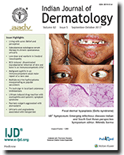
INDIAN JOURNAL OF DERMATOLOGY
Scope & Guideline
Transforming dermatology research into accessible knowledge.
Introduction
Aims and Scopes
- Clinical Research and Case Reports:
The journal emphasizes clinical studies and case reports that explore various dermatological conditions, their presentations, and treatment outcomes, providing insights into real-world applications in dermatology. - Epidemiological Studies:
Research focused on the prevalence, demographics, and epidemiological trends of skin diseases, particularly those relevant to the Indian population, is a core area of publication. - Innovative Treatment Modalities:
The journal promotes studies on novel treatments and therapeutic approaches, including the use of biologics, lasers, and other advanced therapies in dermatology. - Dermatopathology:
Contributions that delve into the histopathological aspects of skin diseases, including diagnostic challenges and correlations between clinical presentations and histological findings, are encouraged. - Public Health and Dermatology:
Research addressing public health issues related to skin diseases, including the impact of socio-economic factors and health policies on dermatological care, is a significant focus. - Dermatoscopy and Imaging Techniques:
The journal values studies that utilize advanced imaging technologies, such as dermoscopy and reflectance confocal microscopy, for improved diagnosis and management of skin conditions.
Trending and Emerging
- Autoimmune Skin Disorders:
There is a growing interest in the study of autoimmune skin diseases, such as psoriasis, pemphigus, and lupus erythematosus, reflecting an increased recognition of their complexities and the need for advanced treatment options. - Impact of Systemic Diseases on Dermatology:
Research exploring the interplay between systemic diseases (e.g., diabetes, hypertension) and dermatological manifestations is becoming more prominent, emphasizing a holistic approach to patient care. - Psychodermatology:
The intersection of dermatology and mental health, particularly the psychological impact of skin diseases and their treatment, is emerging as a significant area of research, highlighting the importance of addressing both physical and mental well-being. - Role of Microbiome in Skin Health:
Investigations into the skin microbiome and its role in various dermatological conditions are gaining momentum, reflecting a modern understanding of skin health that incorporates microbial influences. - Teledermatology and Digital Health:
With the rise of telemedicine, research focusing on teledermatology practices and digital health interventions is on the rise, especially in the context of accessibility and patient care during the COVID-19 pandemic.
Declining or Waning
- Traditional Remedies and Herbal Treatments:
Research on traditional remedies and herbal treatments for skin conditions, which once garnered significant attention, appears to be declining as the focus shifts towards evidence-based practices and modern pharmacotherapy. - Basic Science and Laboratory Studies:
While foundational research remains important, there has been a noticeable decrease in the publication of purely laboratory-based studies that lack direct clinical application or relevance to dermatological practice. - Aging and Skin Care:
Though aging and its effects on the skin have been critical areas of interest, the volume of studies focusing on geriatric dermatology seems to be diminishing, possibly due to a shift towards more pressing contemporary skin health issues. - Infectious Skin Diseases:
Research specifically centered on infectious skin diseases, although crucial, has seen reduced emphasis as emerging themes such as autoimmune skin disorders and chronic inflammatory conditions gain prominence.
Similar Journals

Acta Dermatovenerologica Alpina Pannonica et Adriatica
Exploring Innovations in Skin HealthActa Dermatovenerologica Alpina Pannonica et Adriatica, published by the Dermatovenereological Society of Slovenia, stands as an important peer-reviewed journal in the fields of dermatology, infectious diseases, and general medicine. Established in 1994, this journal has built a solid reputation over the years, achieving a Q3 ranking in 2023 within its respective categories, which highlights its contribution and relevance in the academic community. With an ISSN of 1318-4458 and E-ISSN of 1581-2979, it aims to disseminate new research findings, review articles, and case reports that impact clinical practice and promote knowledge in dermatovenereology throughout the Alpine and Adriatic regions. Located in Ljubljana, Slovenia, the journal actively supports open access to its publications, ensuring that valuable insights are available to a global audience, which is crucial for advancing medical research and practice. The dedication to quality and scientific rigor makes Acta Dermatovenerologica Alpina Pannonica et Adriatica a must-read for researchers, practitioners, and students aiming to stay informed on the latest advancements in dermatology and related disciplines.
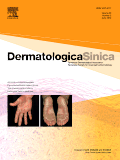
Dermatologica Sinica
Exploring the Frontiers of Dermatology TogetherDermatologica Sinica, published by Wolters Kluwer Medknow Publications, is an esteemed open-access journal in the field of dermatology that has been disseminating critical research since its inception in 2005. With an E-ISSN of 2223-330X and an ISSN of 1027-8117, this journal presents a platform for researchers, clinicians, and students to share cutting-edge findings and advancements in dermatological science. As of 2023, it proudly ranks in the Q2 category of dermatology journals and holds a notable position at rank #62 out of 142 in the Scopus Medicine - Dermatology category, placing it in the 56th percentile for impact. The journal transitioned to an open-access model in 2016, enhancing accessibility and visibility for groundbreaking studies worldwide. With a commitment to fostering innovation in the dermatological community, Dermatologica Sinica aims to advance the understanding and treatment of skin diseases while encouraging scholarly dialogue among practitioners and researchers across the globe.
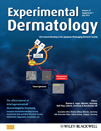
EXPERIMENTAL DERMATOLOGY
Leading the Charge in Dermatological DiscoveriesEXPERIMENTAL DERMATOLOGY, published by WILEY, is a leading journal in the fields of Biochemistry and Dermatology, with impressive rankings including Q1 status in both categories as of 2023. With its ISSN 0906-6705 and E-ISSN 1600-0625, the journal offers a reputable platform for disseminating cutting-edge research and insights into skin biology and related health issues. As a pivotal resource for professionals, researchers, and students alike, EXPERIMENTAL DERMATOLOGY includes a broad scope of topics, fostering a deeper understanding of dermatological conditions and enhancing new therapeutic strategies. The journal’s distinguished performance is highlighted by its Scopus rankings, which place it at the 91st percentile in Medicine-Dermatology and the 65th in Biochemistry. While not an open-access publication, the journal remains committed to ensuring the accessibility of crucial developments within the dermatological community worldwide, facilitating the advancement of both clinical practice and academic inquiry.

Turk Dermatoloji Dergisi-Turkish Journal of Dermatology
Connecting practitioners and researchers to elevate dermatology.Turk Dermatoloji Dergisi-Turkish Journal of Dermatology, published by Wolters Kluwer Medknow Publications, is a prominent platform dedicated to advancing the field of dermatology in Turkey and beyond. With an ISSN of 1307-7635 and an E-ISSN of 1308-5255, this journal plays a vital role in disseminating contemporary research and clinical advancements within the domain. While it is positioned in the Q4 quartile of dermatology journals, its contributions are essential for academics, medical practitioners, and students averse to the latest trends and breakthroughs in skin health. The journal assures accessibility to a broad audience, fostering knowledge exchange, collaboration, and innovation. Given its unique perspective rooted in Turkish dermatological practices, the Turkish Journal of Dermatology serves as a significant resource for enhancing professional competence and driving forward the science of dermatology through its vivid discussions and case studies. For researchers seeking a dedicated venue to publish their work or for professionals eager to stay informed, this journal is an indispensable resource in the ever-evolving landscape of dermatology.

Actas Dermo-Sifiliograficas
Advancing Dermatological Insights for a Healthier TomorrowActas Dermo-Sifiliograficas, published by Elsevier España, stands as a pivotal resource in the realms of dermatology, histology, and pathology and forensic medicine. With its ISSN of 0001-7310 and E-ISSN 1578-2190, this esteemed journal has transitioned to an Open Access model since 2020, facilitating broader dissemination of impactful research. Operating from its Madrid headquarters, it has been a vital platform for scholarly exchange since its inception in 1945, continuing through its converged years until 2024. The journal holds a Q3 ranking in dermatology, histology, and pathology and forensic medicine as of 2023, reflecting its relevance in the academic community where it ranks 79th in dermatology and 126th in pathology among its peers. With a commitment to advancing knowledge and practice in its fields, Actas Dermo-Sifiliograficas serves as an essential repository for researchers, professionals, and students seeking to engage with the latest findings and innovative perspectives in skin and disease research.

AUSTRALASIAN JOURNAL OF DERMATOLOGY
Pioneering insights in dermatological advancements.Australasian Journal of Dermatology is a leading publication in the field of dermatology, issued by Wiley since 1951, and reaching an audience of researchers, clinicians, and students interested in the latest advancements and practices in skin health. With an ISSN of 0004-8380 and an E-ISSN of 1440-0960, this journal stands out with its Q2 ranking in both Dermatology and Miscellaneous Medicine, positioning it within the top 61st percentile of its category according to Scopus. Although it does not provide Open Access options, Australasian Journal of Dermatology is committed to disseminating high-quality research that informs clinical practices and promotes scholarly dialogue. By publishing rigorous and peer-reviewed articles focused on various aspects of dermatological science, the journal plays a pivotal role in enhancing the dermatology community's understanding of skin conditions and treatments, making it an invaluable resource for professionals and students alike.

Dermatologie
Advancing the Science of Skin HealthDermatologie, published by SPRINGER HEIDELBERG, is a prominent journal dedicated to the advancing field of dermatology. With its ISSN 2731-7005 and E-ISSN 2731-7013, this journal has established itself as a valuable resource for researchers, professionals, and students alike. Originating in Germany, the journal focuses on disseminating innovative research from 2022 to 2024, contributing significantly to the understanding of skin health and disease management. Despite its current ranking within the Q3 category in dermatology and a Scopus rank of #88/142, it provides critical insights and advances in clinical practice, epidemiology, and therapeutic modalities. With an emphasis on open discourse, it seeks to foster collaboration among healthcare professionals and researchers, thereby enhancing the quality and accessibility of dermatological research. Engage with Dermatologie to stay at the forefront of the latest advancements in skin-related health issues.
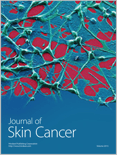
Journal of Skin Cancer
Transforming Insights into Effective Skin Cancer SolutionsThe Journal of Skin Cancer, published by HINDAWI LTD, serves as a vital platform for advancing knowledge in the fields of Dermatology and Oncology. Established as an Open Access journal since 2011, it ensures wide dissemination of research findings, making significant contributions to the understanding of skin cancer pathogenesis, diagnosis, and treatment strategies. The journal holds a respectable rank within the academic community, reflected in its Q3 category placement in both Dermatology and Oncology for 2023, as well as its Scopus rankings, which place it in the 49th and 34th percentiles, respectively. Targeting an audience that includes researchers, healthcare professionals, and students, the Journal of Skin Cancer not only aims to present original research but also solicits reviews and case studies, thereby fostering a rich academic dialogue. With its headquarters located in London, England, the journal encourages global engagement and collaboration among scholars committed to improving outcomes in skin cancer.

CLINICAL AND EXPERIMENTAL DERMATOLOGY
Bridging the Gap Between Clinical and Experimental Dermatology.CLINICAL AND EXPERIMENTAL DERMATOLOGY is a prominent journal in the field of dermatology, published by Oxford University Press. With an ISSN of 0307-6938 and an E-ISSN of 1365-2230, this journal has been a vital resource for researchers and practitioners since its inception in 1976. Recognized as a Q2 journal within the category of dermatology for 2023, it holds a respectable position, ranking #54 among 142 journals in this discipline, placing it in the 62nd percentile on Scopus. The journal is dedicated to publishing high-quality research that spans clinical and experimental aspects of dermatological science, making it an essential source of knowledge for advancing understanding and treatment of skin disorders. Although it operates on a traditional subscription model without open access options, its contributions to the field are significant, influencing both clinical practices and academic research. Researchers, clinicians, and students alike will find vital insights and contemporary themes presented in its pages, supporting ongoing education and innovation in dermatology.
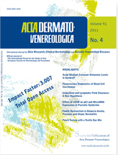
ACTA DERMATO-VENEREOLOGICA
Exploring the forefront of skin health research.ACTA DERMATO-VENEREOLOGICA, published by the esteemed ACTA DERMATO-VENEREOLOGICA since 1945, stands as a leading open-access journal in the fields of Dermatology and Venereology. With an impressive Q1 categorization in both Dermatology and Miscellaneous Medicine, this journal ranks at the 82nd percentile among its peers, highlighting its pivotal role in disseminating cutting-edge research. Accessible to all since 1998, it provides a vital platform for sharing original studies, reviews, and insights on skin-related disorders and treatments, fostering knowledge expansion among researchers, professionals, and students alike. The journal's commitment to high-quality, peer-reviewed content ensures that it remains a trusted resource aimed at advancing dermatological science. Based in Uppsala, Sweden, ACTA DERMATO-VENEREOLOGICA continues to contribute significantly to the global discourse in dermatological health.